#teresa tyszkiewicz
Explore tagged Tumblr posts
Text
paintings round 3 poll 9


tap to view full images
Red by Teresa Tyszkiewicz, 2010:
propaganda: The choice of medium (acrylic and pins on canvas) creates such an interesting texture, I wish I could touch this art!
Hot world by Jerzy Tchórzewski, 1975:
[no propaganda has been submitted]
32 notes
·
View notes
Text
Józef Poniatowski’s children and descendants
Because a couple of months ago there’s been a discussion about Napoleon marshal’s children I decided I out to share with you the info about Józef Poniatowski’s issues and descendance.

Though never married, prince Józef nevertheless had two illegitimate sons.
The oldest one was Józef Szczęsny Mauricy Chmielnicki, born on the 17th of September, 1791.
The mother of the boy was most probably Poniatowski’s mistress of that time, the actress named Małgorzata Magdalena Wiktoria “Zelia” Sitańska (though there are as well versions it might have been another woman, for example, Zelia’s step-mother, also an actress - more on the topic I wrote here)
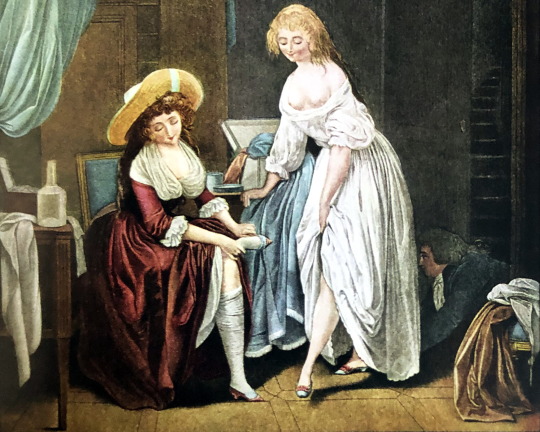
Zelia and here step-mother, a colored engraving
As for the fate of the boy - in his youth (before 1807) he started a military career in the Army of... Austria. Most probably it was prince Józef himself who arranged it, because his career started in the Austrian army too. (Another question is why Poniatowski didn’t “transfer” his son into the Army of the Duchy of Warsaw after the latter had been created, but, I’m afraid, we’ll never know the answer.)
And when in 1809 Austria attacked the freshly created Duchy, Józef Chmielnicki took part in the war... on the side of the Austrians. (And his father kinda accepted this, because in his will written 3 years later, in 1812, Poniatowski mentioned not only his firstborn but as well the fact that the latter was an officer in the Austrian Army.)
Chmielnicki fought as well in the next coalition wars, in 1812-1815 (against Napoleon as well), in 1831 he fought in defense of the Roman ecclesiastical state against local insurgents; for this he received the papal Order of St. Gregory. He also had the Austrian Military Cross. In 1856 he retired with the rank of colonel. He died unmarried in Vienna in 1860.
Unfortunately, I wasn’t able to find any image of Józef Chmielnicki, but in his military service records there is a little bit on his appearance:
Tall, of good health, very lively temperament and honest and reliable character. Polite and tidy; sometimes a bit violent and not always consistent. Zealous and active, with a special penchant for service in rifle units. He was wounded twice. He is fluent in German and Polish in speech and writing, speaks French and a little Italian. A very good staff officer, suitable for a regiment commander.
More do we know about Prince’s Józef’s other son, who was born on the 18th of December, 1809 in Warsaw and was then was given the name Józef Karol Ponitycki.
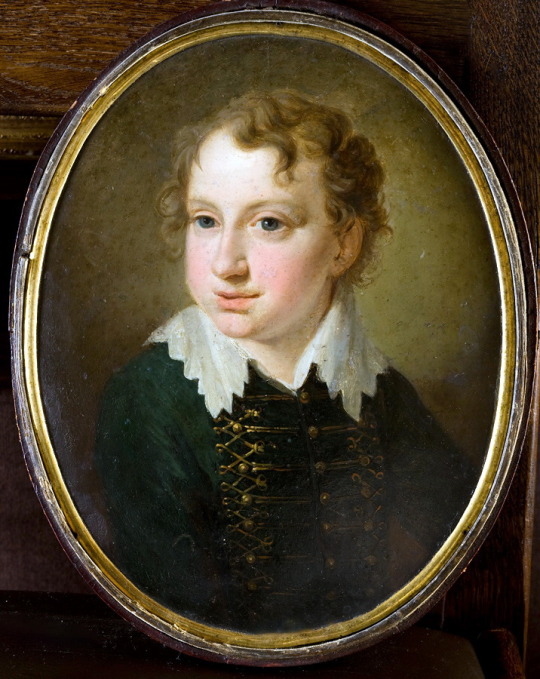
Józef Peszka, Portrait of Józef Ponitycki, 1815
As for Józef the second mother - there are no doubts in it, it was prince Poniatowski’s another mistress, Zofia Czosnowska née Potocka (more about her - here).
Though Czosnowska was married, prince Józef acknowledged her child and mentioned him in his will.
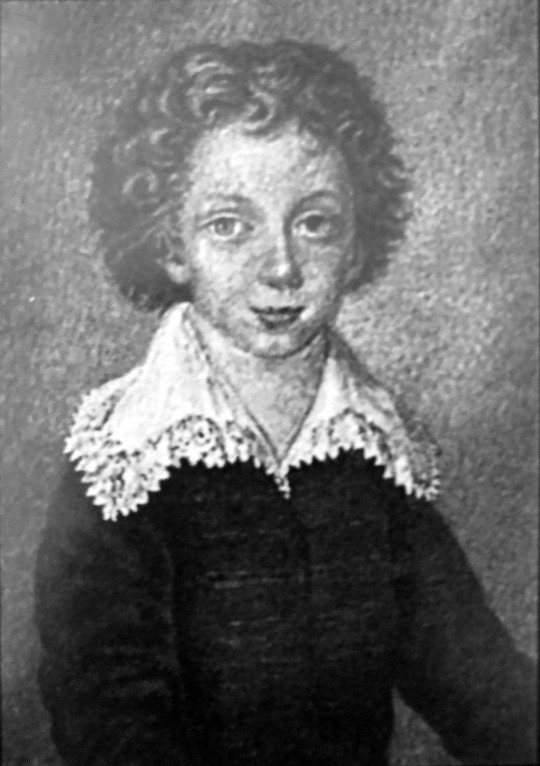
A miniature showing Ponitycki at the age of ten
The boy’s mother, however, didn’t care for her child much. Having divorced her official husband she married again in 1815, then placed her son in the custody of his aunt, prince’s Józef sister countess Maria Teresa Tyszkiewicz.
In the 1821 countess Teresa became the boy's legal guardian (Czosnowska officially gave him up) and in 1828 adopted him, changing his surname from Ponitycki to Poniatowski and adding Maurycy (Maurice) as his third name, thus making the boy the namesake of her long-term love Charles Maurice de Talleyrand.
And a little bit before, in 1826, Józef the younger gained French citizenship, and at the age of 18 (1827) he volunteered to join the French army.
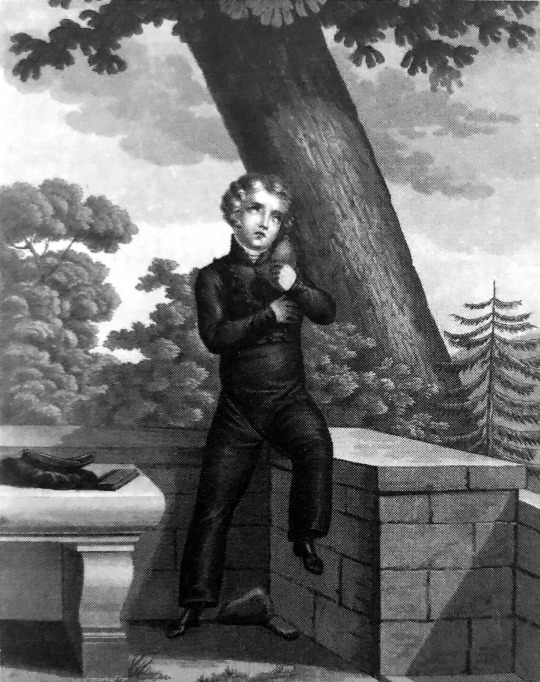
An anonymous painter, Prince Józef's son grieving after his father, 1820
The enlistment papers say that he was a healthy, blue-eyed, tall (1.79 m) blond, oval face, strong chin and aquiline nose. After graduating from school, he took part (as chasseur sergeant) in the Greek campaign in the Peloponnese (1829), later he was transferred to Algiers (1830), but he quickly returned to France.
During the July Revolution in Paris that year Poniatowski was among those soldiers who were putting it down, but when a year later the November Insurrection broke out in Poland he, together with his friend, Count of Montebello, a son of the Marshal Lannes, went to Poland to join the uprising. After the fall of the uprising, Józef returned through Galicia to France, where joined the rifle regiment as a captain and took part in the war in Algiers with Abd del-Kader in the years 1832-1836.

Józef Ponitycki-Poniatowski charges the camp of Emir Adb-el-Kader, a drawing by a French painter Eugène Chaperon
In 1839, driven by longing for his homeland, Poniatowski came to Kraków and made efforts to obtain permission to return to Warsaw. But the Russian Governor Paskevich refused him entrance and even tried (unsuccessfully) to confiscate) properties Józef inherited from his father and aunt.
Not being allowed to return to Poland, Poniatowski returned to France and to his regiment. He died on February 15, 1855 in Tlemcen, Algeria, and was buried there.
As for Józef Karol Poniatowski’s private life - in 1836 he married an Englishwoman, Maria Anna Semple. They have two children - a son, Józef Stanisław, born in 1837, and a daughter, Maria Teresa, a year younger.
Józef Stanisław joined the army at the age of 17 and went on the Crimean campaign. During the siege of Sevastopol, he was appointed lieutenant for his bravery. He then served in the cavalry regiment. He left the service due to ill health. In 1866 he married Léonide Marie Victoria Charner, the daughter of a French admiral, the chief commander of a sea expedition to China.
Six weeks after his marriage with Léonide Charner in 1866 he became mental ill. From 1880 until his death July 20, 1910 in Geel, Belgium, where he resided as a psychiatric patient in the wellknown Geel "Colonie des Aliénés''. (Many thanks to Werner for providing me with this information).
As for Józef Stanisław’s issue - there we have a kind of discrepancy. According the Polish sources like, for example, the Genealogy of the Descendants of the Great Sejm , he died childless but according his profile at geni.com he did have a son, named André whose descendants still live in the US. (The site doesn’t allow to see all the data but it is highly probably that the direct male line continues till our days.)
Maria Teresa, after the death of her father, was taken care of by the Duchess d'Eckmühl, the widow of the Marshal Davout. In 1859, Maria Teresa married Louis de Guirard, Comte de Montarnal, grandson of Marshal Ney. He was an official in the Ministry of Treasury. They had seven children: three sons and four daughters. But neither of those, according both the Genealogy of the Descendants of the Great Sejm and Geni.com had issue.
What’s more, according Geni.com Józef Karol Poniatowski after the death of his first wife married again. That time he took as a wife a woman named Elżbieta Fuchs, and they have a son named Wojciech Józef. That Józef, it looks like, was married, but no information about his issue is provided.
#Poniatowski#józef poniatowski#zelia sitańska#Józef Szczęsny Mauricy Chmielnicki#zofia czosnowska#Józef ponitycki#józef karol maurycy poniatowski#józef poniatowski's children#józef poniatowski's descendants#józef peszka#eugène chaperon
24 notes
·
View notes
Photo

Teresa Tyszkiewicz (1953 - 2020)

Untitled, courtesy of the artist and Muzeum Sztuki in Łódź
She left martial-law Poland in 1982 for France, where she began fastening pins, sometimes covered in thick acrylic paint, cotton, wool, or horsehair, onto canvas, paper, sheet metal, and wood. The repetitive gesture of pinning... on monumental vertical paintings, up to thirty thousand pins—Tyszkiewicz’s dramaturgy of pain—accumulate in wavelike organic forms painted in black, bloody red, blue, or gold. - artforum
thnx sasparillagodzilla & neo-catharsis
#Teresa Tyszkiewicz#mix#photo#overpaint#assemblage#textile#bosom#portrait#collage#mixed media#hi resolution
11 notes
·
View notes
Photo

Teresa Tyszkiewicz, “Ziarno”, 1980
5 notes
·
View notes
Photo

“Portrait of Maria Teresa Tyszkiewicz (Poniatowski)” (c.1797) by Kazimierz Wojniakowski (Polish;1771-1812)
pastel on paper
National Museum Poznań
#kazimierz wojniakowski#wojniakowski#art#artist#pastel#portrait#empire#poland#tyszkiewicz#tyszkiewicz family#nobility#polish nobility#poniatowski#poniatowski family#polish art#polish artist#painters#polish painter#polish panter
39 notes
·
View notes
Photo

“Portrait of Maria Teresa Tyszkiewicz (Poniatowski)” (c.1797) by Kazimierz Wojniakowski (Polish;1771–1812), pastel on paper, National Museum Poznań
#Kazimierz Wojniakowski#wojniakowski#portrait#poland#polish nobility#nobility#noblewoman#art#artist#painter#pastel#polish art#polish artist#Polish painters#Polish Painter
29 notes
·
View notes
Text
paintings* round 1 poll 14


Red by Teresa Tyszkiewicz, 2010:
propaganda: The choice of medium (acrylic and pins on canvas) creates such an interesting texture, I wish I could touch this art!
The country of ornaments by Zbigniew Makowski, 1967:
[no propaganda has been submitted]
45 notes
·
View notes
Note
Hi ! Question about Józef Poniatowski: Did you know the Czartoryski family? What was your opinion that your sister was close to Charles de Talleyrand? Thanks.
Good evening, and thank you for your questions.
As for first one, about the Chartoryski’s family - of course prince Józef knew him.
Furthermore, they were a kind of relatives, because prince Jozef’s paternal grandmother, Konstancja, was born as a Czartoryska. (Which makes prince Adam Jerzy Czartoryski and his siblings Pepi’s secound cousins.)
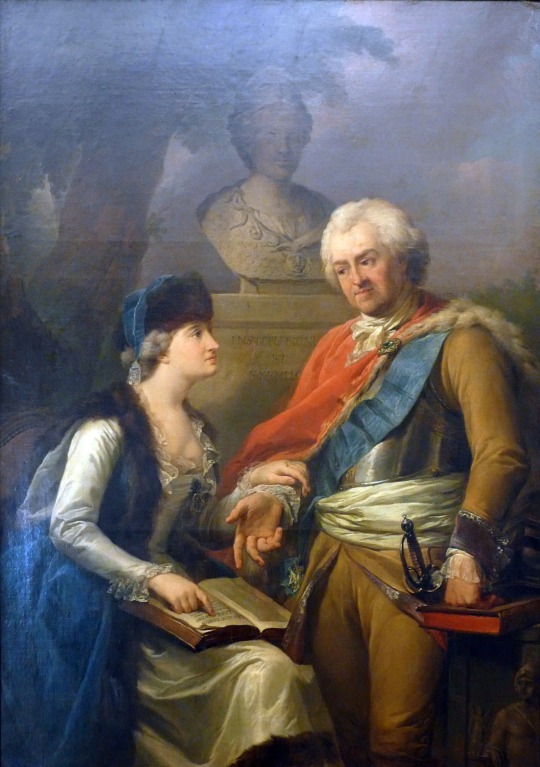
Portrait of Stanisław Poniatowski and his wife Konstancja Czartoryska, Marcello Bacciarelli, circa 1766-1771
Many times prince Józef visited the Czartorysku’s residence in Puławy. They most known episode, it looks like, was in 1809, when after the battle of Raszyn Poniatowski with his army went to Galicja. Though that time Puławy belonged yet to Austria, the princess Izabella and the prince Adam Kazimierz (Adam Jerzy’s parents) greeted Pepi very warmly. His soldiers were allowed to camp in the palace park…
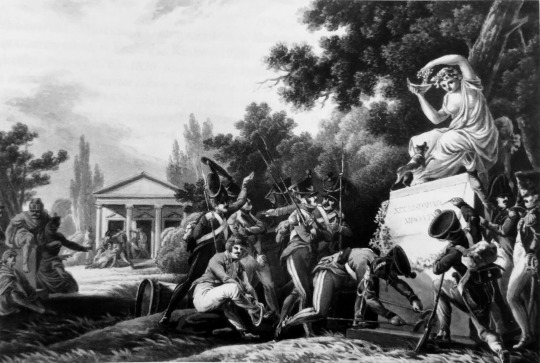
Polish soldiers, who were wounded in the battle of Sandomierz in 1809 and then treated in Puławy, leave the crutches they don’t need anymore, in Puławy’s park. An engraving made in the 19th century.
… and Pepi himself participated in the opening of the Gothic house, a garden pavilion built as additional spaces for the items of princess Izabela’s collection objects related to the Polish and European history.
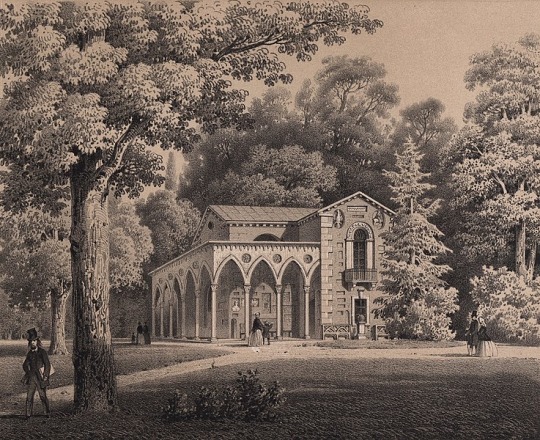
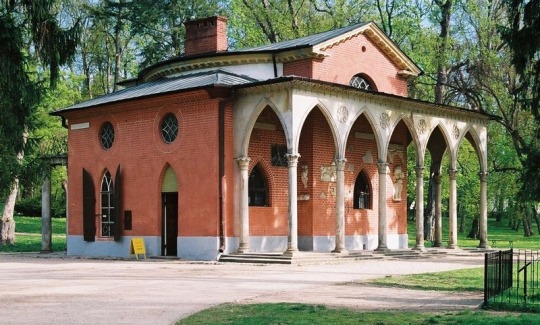
The Gothic house on the lithography made by Adam Lerue in 1858; and its modern photo
And after prince Józef’s heroic death princess Izabela gathered a collection of “souvenirs” related to him and exhibited them in another park pavilion, the Temple of Sibyl.
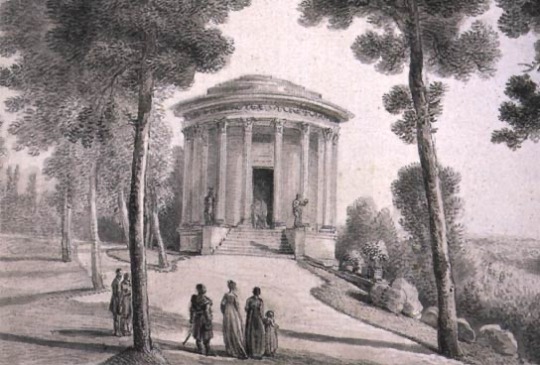
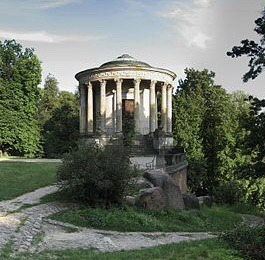
19th-century engraving of the Temple of the Sibyl, and a contemporary view.
Furthermore, on the ground floor of the Temple there was places an obelisk dedicated to prince Józef:
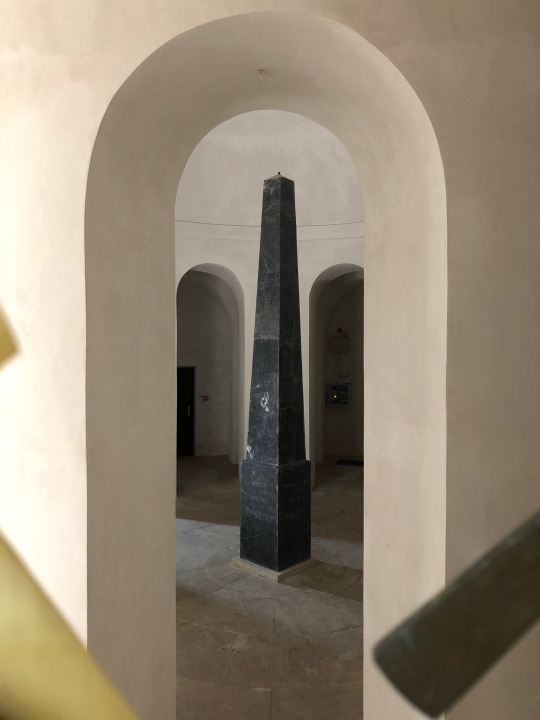
Unfortunately, this floor is open for visitors very rarely, so my photo was made through a window…
As for the youngest generation of the Chartoryskis - the closest of them to Pepi was, I think, Konstanty. He was a colonel of the Duchy of Warsaw since 1809 and accompanied prince Józef during his visit to Paris in 1811.
Speaking of the older brother, Adam Jerzy, I can recall that he was among those who tried to persuade (in correspondence) Poniatowski in 1813 to switch sides, to leave Napoleon and join Russians. (And also there was a concept named “Puławy’s plan” in 1805, about the resurrection of Poland under Russian protectorate. That time prince Adam also tried to persuade Poniatowski to join.)
Then the sisters… Zofia Zamoyska, née Czartoryska, was the latest person to give a party for prince Józef on the Polish soil. And happened this in May 1813 in Kraków, just a couple of days Pepi left his motherland for good. The older sister Maria also may have been present there. (And, you know, the names of Czartoryski’s sisters also appeared in a long list of women whom prince Poniatowski was attributed to have relationship with. So I promise to return to the topic one day )))
And now let’s move to the second of your questions, about prince Jozef’s sister’s relationship with Charles Maurice de Talleyrand.
Teresa was married to the count Wincenty Tyszkiewicz in 1778, when she turned 18. He was only 4 years older than her, but he was - as diarists recall - a kind of retard. And rather eccentric. (For example, he had a habit to wear female clothes at home.) And she was bright and high spirited, liked horses, hunting etc. So she became bored of the husband very quickly, and decided to leave him.
To obtain a divorce that time was… very complicated, but still possible. But Teresa and Jozef’s uncle, the king, did not allow his niece to start the process. So the spouses Tyszkiewiczs just separated. Teresa travelled in Europe, then settled with her brother and his mistress Henriette de Vauban in Warsaw. But, in contrast with Pepi, for the next 30 almost years after the separation no one man was ever mentioned as her love interest.
And then, with the arrival of Napoleon’s court in Warsaw there appeared French foreign minister. Charles Maurice de Talleyrand.
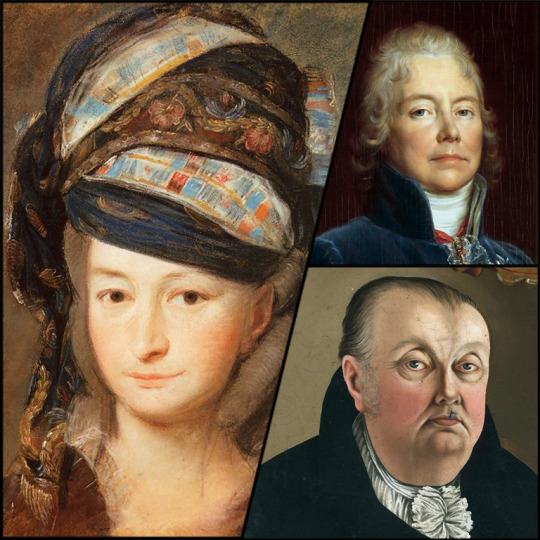
Left: Kazimierz Wojniakowski, the portrait of Maria Teresa Tyszkiewicz (née Poniatowski), circa 1797. Top right: François Gérard, The portrait of Charles Maurice de Talleyrand Périgord Prince de Bénévent, 1808. Bottom right: Jan Falęski, portrait of Wincenty Tyszkiewicz, 1814
That time Teresa was already more than 45 years old. And Talleyrand had seven yet more. And was married. And was… lame. (Their contemporaries jokes, that they made a strange couple - right leg lame man and one eyed woman. Because Teresa, being a teenager, lost her left eye in accident and since that time had to wear a glass one…)
But everything points that from the countess Tyszkiewicz’s side it was love, the real feeling. As for the prince of Bénévent - well, in the end of his life, when Teresa died, he lamented „the loss of his dear long-time friend” bitterly. But when everything started… she was definitely not the only one for him. (Among his love interests of that time there may be mentioned another Polish aristocrat, Izabela Sobolewska. And Anne-Charlotte-Dorothée, the Duchesse de Courlande. Who was later replaced with her daughter and namesake, who was the wife of… Talleyrand’s nephew Edmond.)
But let’s return to Teresa. When in 1807 Napoleon’s court returned to France, the countess Tyszkiewicz followed the man, who “stole her heart”. She settled in Paris, and visited Warsaw from only now and then. French diarists recall how she held small parties with card game in her house in the French capital, and always lended money for her beloved one when he was short of them. And he, though her feelings didn’t cause great enthusiasm in him, always accepted the money. (Btw, Teresa’s debts were so high, that when in 1811 Poniatowski was in Paris her creditors found him and made to pay.) But it looks like with the time passing Charles Maurice attitude to Teresa softened and he learned to value her. After she finally settled in France in 1820 they made several trips on the South of France together (though not without the company of Dorothea the younger). And the countess Tyszkiewicz even “acquired” her own room in Valençey, prince Talleyrand’s favorite residence. Where, by the way, both she (in 1834) and he (4 years later) are buried, just one near another.
And finally the answer to the question what was Pepi’s opinion on this relationship. Did he know about it? I think that yes. Because it was not a secret in that time’s high society. Did he disapprove? It looks like no. Because, for instance, when he came to Paris in 1811, the big reception on the occasion of his arrival was made, with Teresa’s help, in Talleyrand’s house. And the prince of Bénévent was among those (together with Murat etc) who introduced Poniatowski to Parisian high society.
Well, I hope this long-read did answer your questions (I am sorry, it looks like I am not able to write short posts on my favorite topics). But of not - you are always welcome to ask more )))
#józef poniatowski#charles maurice de talleyrand périgord#teresa tyszkiewicz#the Chartoryski’s family
24 notes
·
View notes
Photo

Teresa Tyszkiewicz (Polish, 1906-1992), Gest [Gesture], 1966. Oil on canvas, 104 x 73 cm.
135 notes
·
View notes
Photo

Teresa Tyszkiewicz, Ziarno, 1980
398 notes
·
View notes
Text
paintings round 2 poll 7


Painting by Henryk Płóciennik, 1978:
[no propaganda has been submitted]
Red by Teresa Tyszkiewicz, 2010:
propaganda: The choice of medium (acrylic and pins on canvas) creates such an interesting texture, I wish I could touch this art!
12 notes
·
View notes
Note
Hello, I've scrolled through your blog to make sure, this question wasn't asked before, but it would seem that it wasn't (though I could've missed it). Can I please ask you of prince Poniatowski's attitude towards Napoleon?
No, this question has not been asked yet, and thank you very much for sending it! It will be my please to write a answer to this.
Relationship between prince Józef Poniatowski and the emperor Napoleon Bonapart
I am sorry, this turned out to be a very long read, and on the topic a little bit wider than asked, so I had to specify the title and give the short answer for those who aren’t interested in details.
So in brief - Poniatowski respected Napoleon, but wasn’t a blind worshipper of the emperor. And in situations when in the balance there might have been Napoleon and Poland, and only one thing was to be chosen for prince Józef this one definitely would be his motherland.

Bronisław Gembarzewski, prince Józef and Napoleon
Emperor Napoleon, as all fans of the epoch knows, first arrived to Warsaw in December of 1806. But to start the long-read about relationship between the emperor and the prince properly we need make a step backwards, to understand what these two thought about each other on the moment of their first meeting.
Prince Józef, in comparison with many of his country men, participated in none of general Bonapart’s campaigns. What’s more - when the count of Provence, future king Louis XVIII resided in Warsaw in 1801-1804 he was an often visitor of Poniatowski’s palace. (So it may be said that before 1806 prince Józef was kind of a “royalist”.)
However, with Napoleon’s victory over Prussia and the emperor’s arrival to the former Polish lands chances of Poland rising from the dead skyrocketed! And prince Józef realized that he couldn’t have stayed away any longer, that if he wanted to participate in his motherland reappearing on the map of Europe he had to join the French.
As for Napoleon - in 1806 the emperor of Frenchmen didn’t have any warm feeling towards the nephew of the last king of Poland. One of the reason was that Claude Carloman de Rulhière, with whose book Histoire de l’anarchie de Pologne Napoleon had studied history of lands he was going conquer, wasn’t sympnathising the Poniatowski family. As other reasons there may be named a fact, that that time in French Army there were other Poles, whom the emperor knew better, like generals Jan Henryk Dąbrowski and Józef Zajączek.
Nevertheless, because when leaving Warsaw the Prussians kinda left the city “in charge” of Poniatowski, Napoleon had to meet prince Józef on entering the city. And from the data I was able to find it looks like the first meeting of the emperor and the prince happened on the 19th of December.

Prince Józef with Napoleon during the war campaign - drawing by Wacław Lipiński
With this image I am obliged to make a small digression. Napoleon, as recent investigation show, was not that short as he was thought to be because of English cartoons. Józef Poniatowski, on the other hand, was described by the contemporaries as a man of the middle height. So, in my opinion standing side-by-side these two must have looked like as people of the same height.
With the emperor so prejudiced against prince Józef, you may ask, how did it happen that less than a month later, on the 14th of January 1807, the latter was appointed as a Director of War? (In October of 1807, after the Duchy of Warsaw was created, Poniatowski’s post acquired the name of “Minister of War”.)
The answer is that behind the event there was a long and complicated intrigue, in which were involved such people as Joachim Murat (with whom, as you may remember, prince Józef quickly became friends) and Charles Maurice de Talleyrand, that time Foreign Minister of France. (As for the latter - his protection was asked by Pepi’s sister, Teresa Tyszkiewicz.)
And I can’t help but mention that Poniatowski’s nomination nevertheless had some advantages, because in comparison with his “rivals” he was a representative of the aristocracy, what might have provided support to Napoleon from the Polish high-society.
And speaking of high-society I can’t help touching a rather delicate topic, related with Napoleon’s love life, with which Poniatowski - in comparison with what is thought about him - had nothing to do. Yes, I mean the story of prince Józef (and other Polish dignitaries) supposedly forcing Maria Walewska to give in to the emperor in exchange for “Poland’s resurrection”.

SCREENSHOT FROM THE MOVIE “MARYSIA I NAPOLEON”. From left to right - Zdzisław Makłakiewicz as prince Józef, Gustaw Holoubek as Napoleon, Beata Tyszkiewicz as Maria Walewska, Ignacy Machowski as Duroc, Kazimierz Rudzki as Talleyrand, Juliusz Łuszczewski as Anastazy Walewski
Many people believe in it because it is written in so-called Walewska’s memoirs, but the investigations of Polish historians (like, fir example, Marian Brandys) prove that not everything might have happened like it was described in the memoirs. And prince Poniatowski’s involvement in the story is one of the facts. (The closest connection he might have had with this is that Mme Henriette de Vauban, his mistress, might have tried to influence Mme Walewska. But this is definitely a topic to continue in - if at all - a separate post.
So, let’s return to relationship between Poniatowski and Napoleon.
In 1809 the Duchy of Warsaw was attacked by the Austrians, and the Army of the Duchy showed its combat strength, winning the war and taking back from the enemy a huge a part of former Polish territories. The emperor was impressed by prince Józef’s inferiors’ performance, till such a degree that he awarded the latter with the highest imperial order of merit, the cross of the Legion of Honour.
But this was done “by proxy”, and the next, after year 1807, meeting of these two happened only in 1811 in Paris, where Poniatowski was invited to attend the christening of Napoleon’s son, the king of Rome.
Prince Józef arrived to Paris on the 23rd of April, and in the evening of that very day received an invitation from the emperor to appear next day in Saint Clou. What’s more, Poniatowski’s visit was to be happen at once, without an obliged advance as the ceremony of representation by the Saxon ambassador.

Prince Józef with Napoleon during the ceremonial audience at the Tuileries Palace - drawing by Maria Artwińska
And this is the image I like, because both - the prince and emperor - seem to have there the “correct” height!
Why was Napoleon so eager to see prince Józef? Well, at least because the latter brought with him news, which was dangerous to trust to paper. Namely - about planning Russian invasion of the Duchy and the tsar attempts to persuade the Polish Minister of War to switch sides and join the anti-napoleonic coalition. (Can’t help but mention there that Poniatowski revealed Napoleon mere facts, but not the names of the people communicating with him, in order not to put them in danger.)
And what about christening? Of course, prince Józef participated in the ceremony, and was even allowed to have an audience with the child-king. And, no doubts, there followed other court events, huntings, balls, etc. Old friend, Murat, and Poniatowski’s sister’s love interest, Talleyrand, introduced Pepi to the highest Parisian society. Also Pepi paid a visit to the ex-empress Josephine.

Prince Józef in conversation with Napoleon and the French Minister of Foreign Affairs, Talleyrand - drawing by Andrzej Zarzycki
And though initially prince Józef’s stay in the French capital was planned to be a couple of months, in fact it prolonged to four, till the emperor’s birthday. And leaving finally on the 27th of August Poniatowski received as a farewell gift a beautiful snuffbox planted with diamonds and a loan to… pay the debts of his sister Teresa.
And then there came the year 1812. Prince Józef was made the commander of the 5th Corps of the Grande Armée, and with the rest of the Army went to Russia.
However, above “The Polish corps” there was a commander not very competent and lucky, emperor’s younger brother Jérôme. And when it happened that the Russian Army under general Bagration managed to escape from the “second center” corps led by Jérôme, Napoleon blamed on this... prince Józef.
In the battle of Smolensk, however, the Vth Corps managed to distinguish to such a degree, that together with its commander it was mentioned in a bulletin of the Grande Armée.
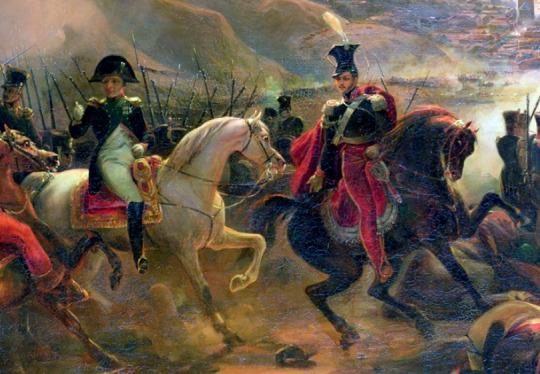
Jean-Charles Langlois, The Battle of Smolensk, 17th August 1812, detail
But after that battle there happened a very dramatic scene between the prince and the emperor. Because, as you might know, the city of Smolensk was the most eastern town ever belonged to Poland. So, if Napoleon’s goal was, as it had been proclaimed in the beginning of the war, to restore Poland, the Grande Armée should have stopped there, at Smolensk. Not to go further east.
And Poniatowski, as a witness of the scene, count Ostrowski, recalled, “begged Napoleon on his knees if not to direct the whole French Army to the south, to the former Polish lands, then at least to separated the Polish corps and send it along the Dnieper river, in the direction of Kiev...”
But emperor was implacable.
What happened next we all know. The battle of Moscow, fire, retreat…
In December Napoleon left his army and speeded to Paris. Prince Józef returned to Warsaw, to rebuild “the Polish corps”, to reenforce the people left with new conscripts and to be ready to join with these people the emperor. When the latter comes with fresh forces, to fight the coalition back.
But the emperor of French didn’t hurry to return to the East of Europe. Failing to wait him Poniatowski had to leave Warsaw, going with his soldiers to Kraków. And was waiting here, for almost three month.
To no avail.
At the beginning of May all the territory of the Duchy of Warsaw, except Kraków, was occupied by Russians. A lot of Polish officers, acquaintances and even friends of prince Józef, resigned from the army. A lot of them were persuading the Polish commander-in-chief to follow, to join the anti-napoleonic coalition.
And… well, here I can’t write that Poniatowski rejected these propositions, all and at once. No, he was listening, thinking over… Asking for terms and thoroughly pondering on what would have been better for his motherland - to stay with France or not.
And on the night from the 6th to the 7th of May, on the eve of his 50th birthday the decision was made.
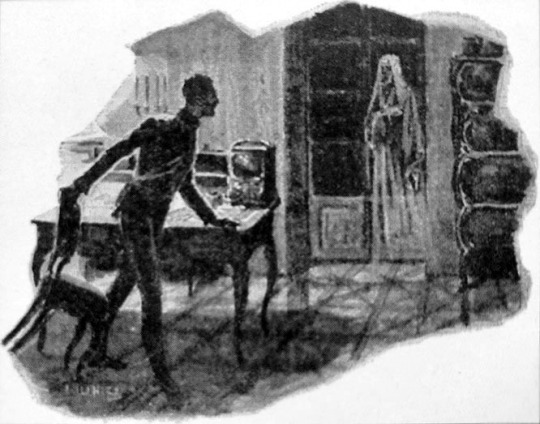
Prince Józef sees “the White Lady of the Poniatowski Family” on the night on 6/7 May 1813 in Krakow (drawing by Ludomir Ilinicz)
Having obtained no written guaranties from the other side, feeling that unconditional surrender - the only thing they were ready to accept from him - was not compatible with the soldier honor, the Polish Bayard decided to stay with Napoleon.
Although to make such a decision was for prince Józef extremely hard (especially if to take into account that he still had not got clear instructions from the emperor what to do). As Poniatowski confided next day to one of his colleagues that night thinking was so difficult to him that he even thought about shooting himself. Twice.
What is not proved - so this fact still stays a kind of legend - that that night prince Józef saw a ghost, the famous “White lady of Poniatowski family”. The fantom that was said to announce with its appearance very bad things to come…
And in 5 month there came… the battle of Leipzig.

Jean-Charles Langlois, The Battle of Leipzig (?)
This image is often signed as „the battle of Leipzig” though judging by the emperor’s, the prince’s and their horses’ poses I suppose it might be another version of “the battle of Smolensk”.
Of course, before Leipzig there was truce, then the battle of Dresden, then retreat and preparations. And in the beginning of the battle there was a moment when French victory still looked possible. But soon it turned out that it was an illusion.
And then the emperor… named general Poniatowski a marshal of France. Thus making him the only foreigner among that cream of French military elite.
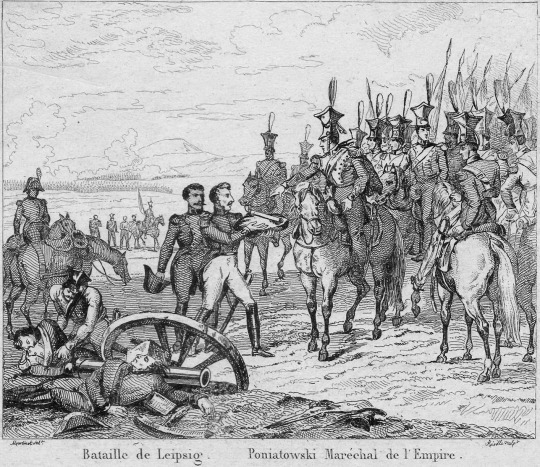
Prince Józef Poniatowski receives the marshal baton, French engraving from the XIXth century
How did Poniatowski react to such a promotion? Did he become happy? Or, at least, glad?
No, not at all. (It looks like he felt that this appointment has more with his future attachment to France, than with military achievements.)
So prince Józef continued to call himself a general, sign documents according his old position. Furthermore, in the written explanation that Poniatowski sent to Warsaw it was stated that “if there was not war for Poland, no one would ever see him in uniform”. Which literally meant resignation. (In the very same letter, though, prince Józef announced that before leaving the army he had to escort Napoleon back to Paris.)
So, dear friends, who was interested in what might have happened with prince Józef had he not been killed at Leipzig - this is the answer. He would definitely retreat with Napoleon to Paris, than resigned and… here the certainty is a little bit less, but something tells me that he would have preferred exile to going back home. But I am not one hundred percent sure.
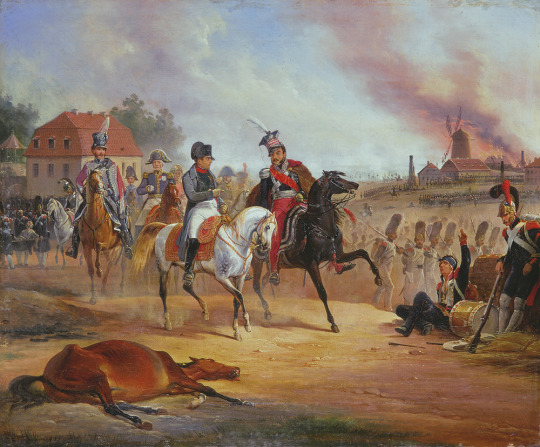
January Suchodolski, Napoleon and Józef Antoni Poniatowski at the Battle of Leipzig
And what about Napoleon? In his memories dictated on St. Helene he wrote that he should have made prince Józef the king of Poland (ha-ha, what would he have done if the latter rejected the crown?), regretted not doing this.
But what is, in my opinion, more interesting, is to learn what the ex-emperor thought on other Poniatowski-related topics? Did he regret blaming prince Józef for Jerome’s mistakes? Had he doubts on not listening the Polish commander’s pleas to take back former Polish land instead of going to Moscow?
Alas, I am afraid, this is a thing we’ll never know…
#józef poniatowski#napoleon#poniatowski#poniatowski and napoleon#charles maurice de talleyrand périgord
57 notes
·
View notes
Photo

Teresa Tyszkiewicz, Stillfrom Ziarno (Grain) via - also here
3 notes
·
View notes

